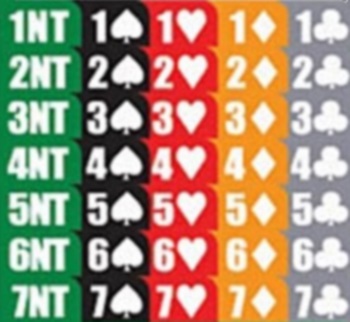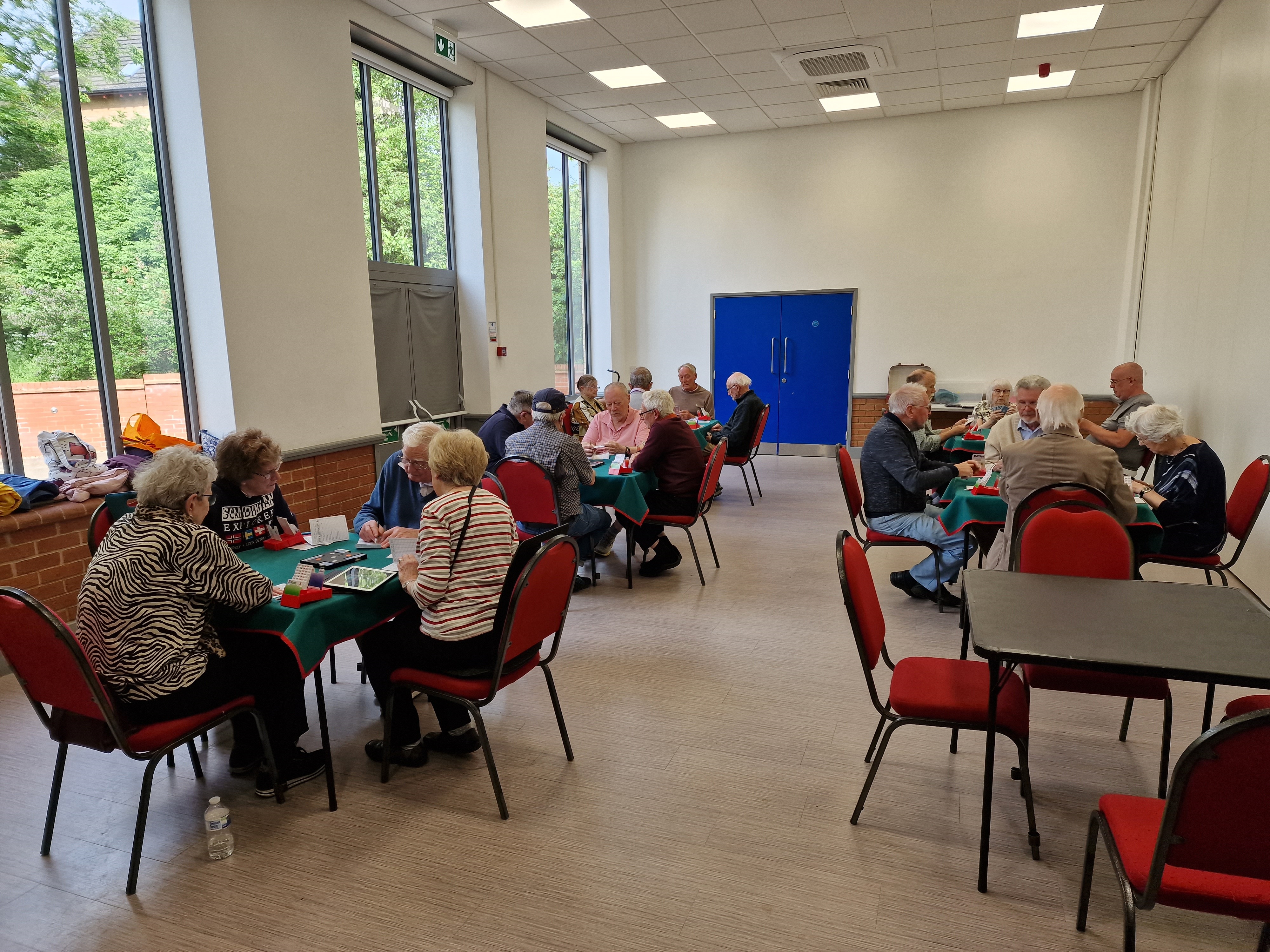
Opening the bidding
How to open the bidding in a game of bridge
 The players start by bidding, as mentioned earlier, with the dealer making the first bid. Any player who feels they cannot make a bid may say "pass" or "no bid". The bids move clockwise around the table as do the cards when they are eventually played.
The players start by bidding, as mentioned earlier, with the dealer making the first bid. Any player who feels they cannot make a bid may say "pass" or "no bid". The bids move clockwise around the table as do the cards when they are eventually played.
During the bidding players are trying to convey as much accurate information as possible to their partner as well as trying to win the auction. Each is trying to tell the other how strong their hand is and which, if any, is their best suit. Unfortunately this means you have to tell the opponents too as they are obviously listening. In a similar way you can learn a lot about their hands by listening to their bidding.
Having valued your hand as described here, if you have the values, you can make an opening bid as follows. (The letters A, B, C etc are only for clarity)
- A) 12 to 14 points with a balanced hand, (must NOT contain a singleton), one No Trump
- B) 12 to 14 points with unbalanced hand. One of a suit such as One Club, One Diamond, one Heart or One Spade
- C) 15 to 19 points. As A or B above but you are going to bid differently the next chance you get!
- D) 20 to 22 points with a balanced hand, bid Two No Trumps
- E) 20 to 22 points with an unbalanced hand bid two of a suit BUT NOT TWO CLUBS. (Note: Some people play weak two's but these bids are out of the scope of this lesson)..
- F) 23 points upwards, bid Two Clubs. (This is an artificial bid and will be explained later)
From your partner's point of view, here is what each of the above bids means:
- A) I have an opening hand and it's balanced. I have an even distribution and no more than one suit with only two cards in it
- B) I have an opening hand and it's not very balanced. In fact I probably have five of the suit I mentioned
- C) The same as A and B above but you may revise your hand upwards if partner or opponents bid. At this stage, partner does not know this and assumes A or B
- D) I have a balanced hand and this is looking really good. We can do OK even if you don't have much
- E) I have an unbalanced hand and I love this suit. It's looking really good and you MUST reply at least once
-
F) I may not have any clubs because this is an artificial bid but we are going to wipe the floor with them if you have any values. IT IS IMPERATIVE that you bid whatever you have. (This bid is known as a game forcing bid because partner should normally keep bidding until game is reached). NOTE: If partner has less than 6 points they should make the artificial bid of 2 diamonds. If this happens, the requirement to keep bidding until game is reached ceases.
There are several other, more advanced, bids which you don't need to know whilst you are learning but a few of them are explained here. You will need to know these eventually but wait until you have played a few times.
To finish this section it's worth knowing the total number of points you and your partner need in your combined hands to make certain contracts. These are:
- To make a part score contract = 21 to 24 points, (eight or nine tricks)
- To make game in a major suit or no trumps = 25 to 26 points, (ten tricks)
- To make game in a minor suit = 28 to 29 points, (eleven tricks)
- To make a small slam in any suit = 31 to 33 points (12 tricks)
- To make a small slam in no trumps = 33 to 34 points (12 tricks)
-
To make a grand slam = 37 points (13 tricks)
The above are only a guide and do not take into account distribution. As an extreme example, if you were dealt a hand of thirteen spades you would only have ten points, (HCP), in your hand but you would make all the tricks if spades were trumps!
Internal Website Links
- Home Page
- Weekly Results
- Bridge Etiquette
- Beginners Lessons
- Artificial Bids (Conventions)
- Slam Bidding
- English Bridge Union
- Play Bridge On Line
- Brian Bridge Scoring
Ads by Google
